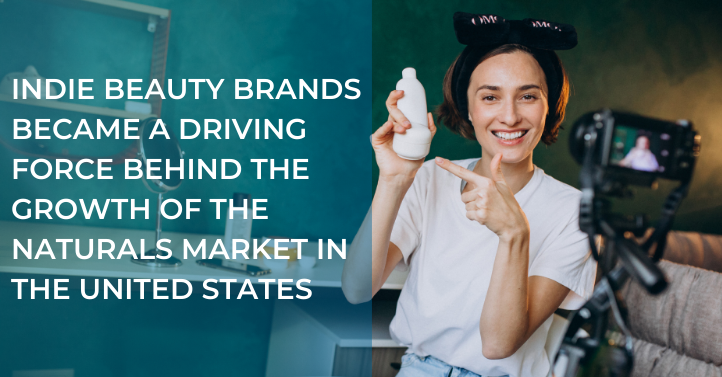As the world first entered coronavirus-related shutdowns in March 2020, natural beauty brands were suddenly tasked with offering two important points of differentiation: authenticity and the ability to pivot.
While conventional brands indeed managed to navigate the pandemic, indies were often the first to react to it. They shifted marketing campaigns, becoming more consumer-focused, personalized, and willing to consider consumer feedback. As a result, consumers gravitated toward these authentic and relatable companies, as shown in our recently published Natural and Clean Beauty Global Series Report. Independent beauty brands became an even stronger driving force behind the growth of the natural and clean beauty market in the United States, advancing more than 30% collectively, compared to a near flat growth for conventional brands.
By category, indies were star performers in personal cleansing, advancing the category nearly 150% over 2019. This is nearly six times the growth in the total category, up nearly 25%, which encompasses essential items such as liquid hand soaps and hand sanitizers, in addition to bath products. The leading indie in the category was legacy brand Dr. Bronner’s, which leaned into its multi-use hero product Pure Castille Liquid Soap. Some newcomers to keep an eye on include Hand in Hand, ArtNaturals, and Raw Sugar Living, each of which have recently entered or relaunched in the last few years.
Meanwhile, despite a small presence in the sluggish makeup category, indie brands such as Kosas and Ilia Beauty innovated to revive consumer interest, resulting in slight growth for indie brands in the declining category. Kosas leaned into its trendy, millennial-targeted positioning with flashy packaging and hybrid products such as the Revealer Super Creamy + Brightening Concealer and Daytime Eye Cream. Meanwhile, Ilia Beauty continued to target a wide variety of consumers by launching complexion products in a variety of shades. This proved to be especially relevant in 2020 due to the Black Lives Matter movement, as a lack of diversity has previously plagued the natural and clean makeup segment.
On social media, indies were often the first to react to milestone moments in 2020, including Black Lives Matter. This was especially common for brands in hair care that cater to the multicultural or textured hair community; Mielle Organics, for one, regularly posted support for Black-owned business and launched a campaign for Juneteenth. Indie brands were also quick to react to new consumer desires for fun and uplifting content. Self-care–inspired posts from brands such as Kopari and Pacifica served as an escape from the confines of quarantine and boosted sales.
Now, as the United States moves into its next stage of the “new normal” in 2021, indie brands are continuing to drive interest through influential marketing campaigns, innovative product launches, and authenticity. And as the merger and acquisition market heats up again, some of the biggest winners in the natural and clean beauty market may be new targets.
Identify potential acquisition targets with an assessment on how naturally positioned brands are performing compared to conventional players with help from Kline’s Natural and Clean Beauty Global Series. Furthermore, stay abreast of the factors that influence the rise of indie titans in China and the United States, which often become acquisition targets, in our Beauty Indies report. For more details about these resources, which can help you expand your product portfolio and distribution network in the natural personal care market, contact us.

